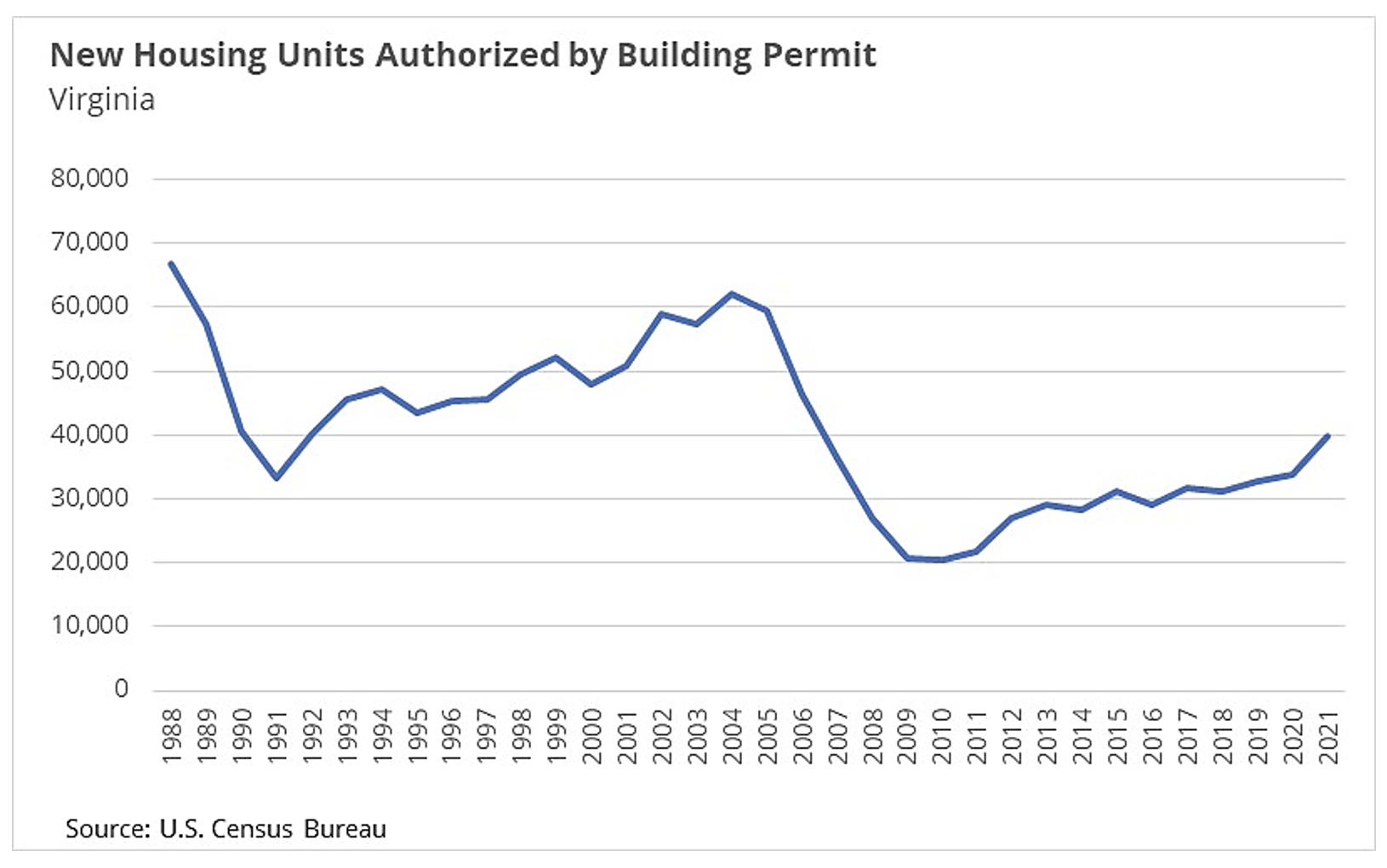Why Don’t Builders Just Build More Homes?
April 7, 2022
With inventory setting new record lows each month, it is logical to ask why more homes aren’t being built to meet the overwhelming demand in the market. Why aren’t builders putting up more homes to help us out of this inventory challenge?
By some measures, builders have been ramping up construction to meet demand. In 2021, there was a total of 39,712 permits issued for the construction of new homes in Virginia. This is the highest number of new permits since 2006. In January and February of this year, counties and cities in Virginia authorized a total of 5,587 permits for new home construction. While this is down slightly from January and February of 2021, it is much higher than in the years following the financial crisis of 2008.

Despite the uptick in the construction of new homes, inventory still remains far below what is needed to meet demand, which has led to extremely fast price growth. There are several reasons why more new homes aren’t being built. Some of these explanations are related to the unique pandemic economy we are in, but others are longer-term challenges in the homebuilding industry that will persist even after short-term obstacles are gone. The biggest hurdles in the home building sector can be referred to as the 3 L’s: Lumber, Lots, and Labor.
Lumber. The cost of lumber, and really all building materials, has escalated during the pandemic. While lumber prices have come down from their pandemic peak, prices of a range of lumber products are still at near-record highs, and the conflict in Ukraine is adding pressure to the market. In addition to rising costs, supply chain issues are delaying availability of all sorts of inputs into a new home, from doors and windows to roofing shingles and drywall. Even if builders want to put up more homes, they simply do not have the materials to start building.
Lots. Home builders report that the overall supply of developed lots is at a record low. Lots are hardest to find in the most desirable markets, but the availability of places to build is tight in just about every market. A lack of vacant land and insufficient infrastructure to serve new homes are major reasons for the lot shortage. Difficulty developing infill projects and getting land rezoned to allow housing are other challenges.
Labor. Builders have a hard time finding workers. There is a major shortage in all sorts of construction trades, including carpenters, plumbers, masons, electricians, drywall installers, and roofers. The building industry has been grappling with the labor challenge for years. By one estimate, there is a need for one million new construction workers now to fill current job openings.
In addition to the three L’s, home builders often face byzantine regulatory processes and severe neighborhood opposition when they propose new housing developments, which also impedes the construction of new homes.
Builders want to put up more homes. Price pressures and supply chain issues will hopefully ease in the coming year. Other longer-term challenges will persist. REALTORS® and their partners can help get more housing built by working to encourage more young workers to enter the construction trades and by publicly supporting the development of new housing in their communities. For more resources, check out our data on local housing permits and our recent podcast on new construction in Virginia.
You might also like…
See It, Want It, Buy It: Single Female Homeownership
By Dominique Fair - March 11, 2025
Women have fought for a lot over the last 177 years, whether it was for fair wages, the right to vote, or to be able to own a… Read More
Impact of Infrastructure Projects on Residential Markets
By Sejal Naik - February 27, 2025
“Location, location, location” is often quoted in the real estate market and emphasizes the importance of location-based features in people’s housing market decisions. While many locational characteristics stay… Read More
Key Takeaways: January 2025 Virginia Home Sales Report
By Virginia REALTORS® - February 26, 2025
Key Takeaways Virginia’s housing market saw a slight uptick in activity at the beginning of 2025. There were 5,758 home sales across the commonwealth in January 2025, 104… Read More